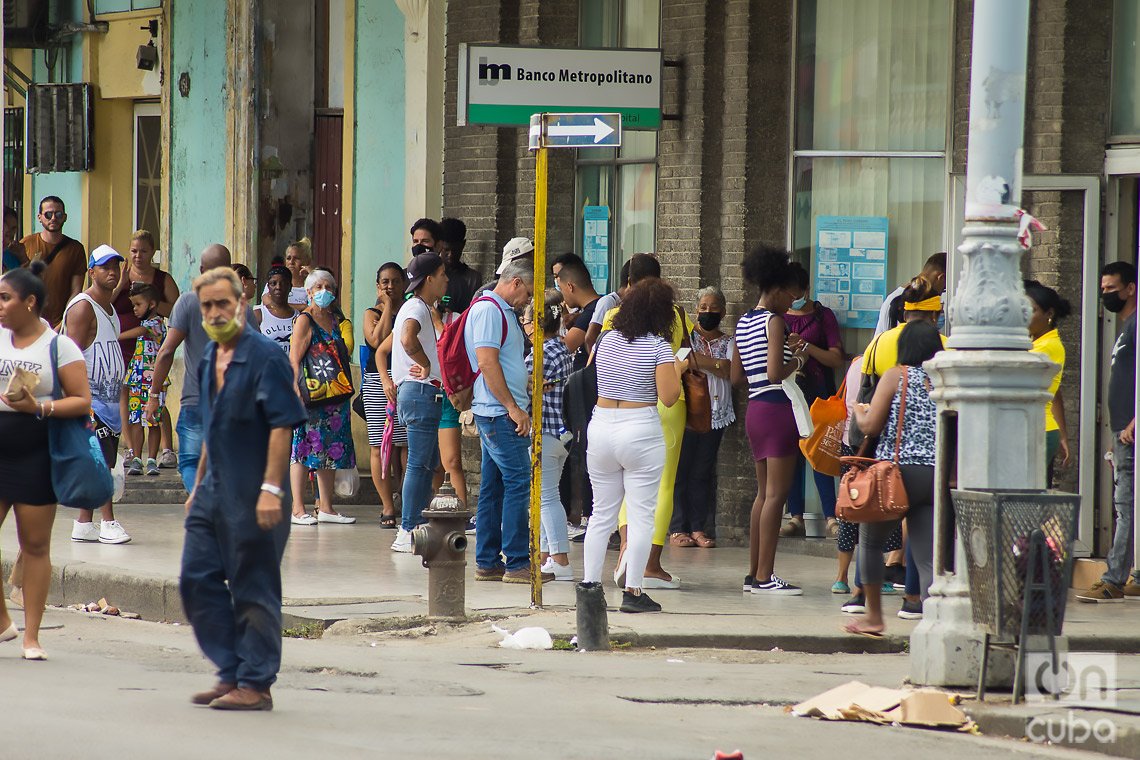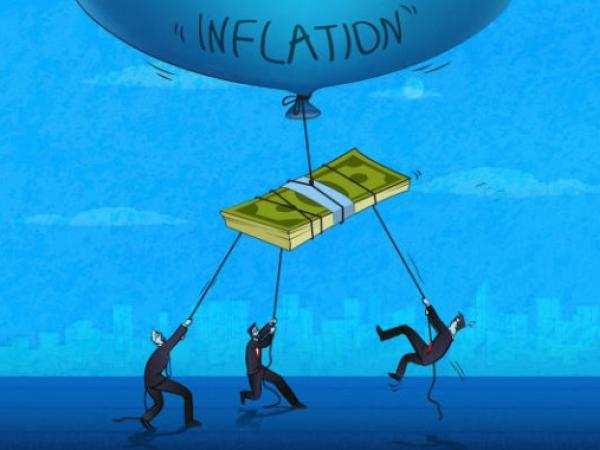Last Wednesday, August 3, the Cuban government ad that would establish a new foreign exchange market. Alejandro Gil Fernández, Minister of Economy and Planning, reported on the television program Round table that the purchase of foreign currency from Cubans would begin, and that all currencies, including the US dollar, would be accepted. The sale, on the other hand, would not take place until “conditions allow it,” the minister explained. The exchange rate announced for the population was 120 Cuban pesos to one dollar, while the business sector will continue to operate at an exchange rate of 1×24.
Below we offer our readers the answers of Dr. C. Juan Triana Cordoví to some questions on the subject.
How do you assess the provisions announced this Wednesday for the establishment of a new exchange market in Cuba? Do they seem consistent with the objective declared by the authorities to contribute to the economic recovery of the country and potentially effective in the current scenario of the Cuban economy?
I think that acknowledging the need to create a foreign exchange market that operates legally (there is one that works informally and illegally) is undoubtedly a good thing. It was necessary to rectify the mistake made when the call was announced monetary order, being able to act, even partially, on the foreign exchange market was, is and will be a necessity. The economy is also governed by laws although many do not believe it and those laws are fulfilled, beyond the will, the good or bad intentions and the dose of romanticism that you want to add. Our reality today also demonstrates it.
As for the second part of this question, my answer is also affirmative. I clarify the point, the foreign exchange market is a necessity, it is not an invention of two or three theoretical theorists. Seeking to advance the reform without recognizing and putting into operation a legally established foreign exchange market is what was clearly inconsistent with those purposes of promoting the country’s recovery.
In the same way, a foreign exchange market that does not consider an adequate exchange regime is incomplete. The question about what this regime should be has had multiple answers, however, the decision adopted that this exchange regime be fixed in a country with an open economy does not seem like the best decision. Our own economy has been demonstrating this for a long time.
What do you think about the terms established for the beginning of this market? Do you consider it sensible to start only with operations to purchase foreign currency from the population, taking into account that the Minister of the Economy himself recognized that today the demand for foreign currency is “very probably above the level of supply”?
Let’s start at the end, what are the reasons why, as the minister stated, the demand for foreign currency is greater than the supply?
First reason, reserve value. The public demands dollars to use them as a store of value in the face of the weakness of the Cuban peso. It is a foreign currency and as such cannot be “kidnapped” by the State, whatever it may be. The public retains dollar balances at home rather than putting them in the bank because they cannot retrieve those deposits when they need them, so they prefer to put them in the “cushion account”, always at hand; In addition, the incentives that the bank pays for this type of deposit are not sufficiently attractive.
Second reason: transactions. Within which we can locate some that I think (and I clarify that I have no way to corroborate it) are the thickest; the payment of the costs of emigrating illegally via Central America; the buying and selling of houses and cars; the non-commercial importation of products to market them informally or in “garage sales”; Then there are countless other operations that people prefer to do in dollars.
Ours is a “partially” dollarized economy where the dollar has a lot of space. It is an economy with an inflationary movement that constantly devalues the national currency in which people receive their income, which is converted into salt and water due to this increase in prices, so having a dollar works like a “bulletproof vest”.
Now, it is difficult for me to pronounce on the “sensitivity” of the measure. Only buying and not selling is to stay halfway again. According to statements by the minister himself and other officials, there were many unbankable dollars in the coffers of the banks, so what prevents the sale of part of them?
What do you estimate about the fixed exchange rate with respect to the dollar? What impact do you foresee it could have on the informal market not only for the dollar, but also for the euro and the MLC?
Going out with a rate that is close to the most undervalued can be a good option. The effect on the informal foreign exchange market will depend on several factors, but if everything remains as it is today, it is possible that it encourages the informal market rate to rise.
In general, do you think that the proposed terms can really encourage the sale of foreign currency to the State by the population and contribute to later reaching equilibrium in the foreign exchange market? How effective can this intention be in a context of supply shortages such as the one the country is suffering from?
In my opinion, the preference for the dollar is much greater than the preference for the cup. The holders of balances in dollars do not believe that they will get rid of those balances for the reasons that I expressed above.
In any case, being able to sell dollars legally to a formal institution is much better than doing it informally. It cannot be ignored that a source of dollars in Cuba is the remittance, and a part of that remittance is destined for consumption in Cuban pesos, so without a doubt the measure will allow dollars to be collected, whether or not that collection will be significant is another matter. .
The other source of dollars is tourism, the same thing happens here, for tourists it is much better. There will also be income in dollars. And the tourist will not feel fleeced.
The purchase of State currency: a path through a stone alley
Continuing in this sense, what effects can be expected on the prices of products and services, especially in the non-state sector and informal channels, and in general on the inflationary dynamics on the Island? Do you consider the minister’s assertion correct that this measure “does not generate any basis or justification for increasing prices”?
There are at least two fairly clear effects:
The first is that the purchase of dollars by the State has as its counterpart an increase in the amount of cup in circulation. In the conditions of our economy, with a high supply restriction and without other instruments to sterilize money in circulation, the prices of some products may react upwards. But I don’t think it’s easy to make an estimate in quantitative terms. I stress that it is a latent possibility.
The second is also relatively obvious: the state competes for scarce dollars in a market where supply is restricted. The demanders of dollars will have to offer a better price to informal operators for their dollars if they want to obtain them, producing an effect of increasing the informal rate and that effect can be transferred in a short period of time to some goods and services. The end is more inflation.
As part of the new foreign exchange market, the State will begin to buy dollars in cash again, although it will not accept their deposit on cards in MLC. How can this measure be interpreted? Is it consistent with the current state of the Cuban economy and the effects on it derived from the US embargo?
I reiterate that generating an alternative to the informal foreign exchange market is something necessary. Create a foreign exchange market as well. Manage it properly even more.
It is consistent with the argument that the Cuban authorities have raised over and over again. It is not possible to convert physical dollars into MLC because there is no way to bank them due to the measures implemented by the US administration.
And there are positive effects. This is the case of exporters. If from now on the 20% that was withheld in dollars and they were paid in Cuban pesos 24 cup for 1 dollar, they begin to be paid 120 cup for 1 dollar, it is an incentive for them. From what law of the resolution I interpret that it should be so, but I am not totally sure.
As part of the provisions implemented, a decree was approved that allows different exchange rates to be established in the country, and the minister himself confirmed the implementation of a secondary scheme for the allocation of foreign currency for certain activities and economic actors, with a type of own exchange rate, different from the official exchange rate, in force for most of the business system, and the one set now for the new exchange market aimed at the population. Doesn’t this constitute a step backwards after what is stipulated in the Monetary System and its objective of eliminating distortions caused by the existence of various exchange rates? How can this new variety of exchange rates impact the country’s current economic scenario?
It is to return to a system of multiple changes, something very far from what was intended with the ordering. From my perspective, it will generate greater distortions and open up more arbitrage spaces.
There is also the issue of allocation criteria and the mechanisms that will be used for it. The discretion can be very high and can also be far from the efficiency criteria.
With all the risks and difficulties surrounding the announced implementation of this new foreign exchange market, what can the Government do to support its effectiveness? What other steps and measures could contribute to achieving the desired effect instead of causing new problems and distortions that imply changes and dismantling of what is now established?
Right now, in the short term, part of those unbankable dollars would have to be sold to the population. That trip from point A to point B should be short and fast, because higher costs can be paid than those that are intended to be reduced. In the end, those dollars are in Cuban banks, they cannot be used in the international financial system due to the US blockade, so why not sell them?
It would be reiterating many other proposals made long ago, including allowing other national and international companies to operate in the consumer goods market. If this isn’t the right time to do it, then I can’t imagine when it might be.
In the longer term, I believe that for a long time, a not small number of economists have agreed on the need for a macroeconomic stabilization program that goes beyond the strictly monetary issue. The issue is not to announce it, it is to do it and be consistent. There are certainly consequences and some of them will not be pleasant, but the longer the adoption of such a program takes, the higher the costs will be.






